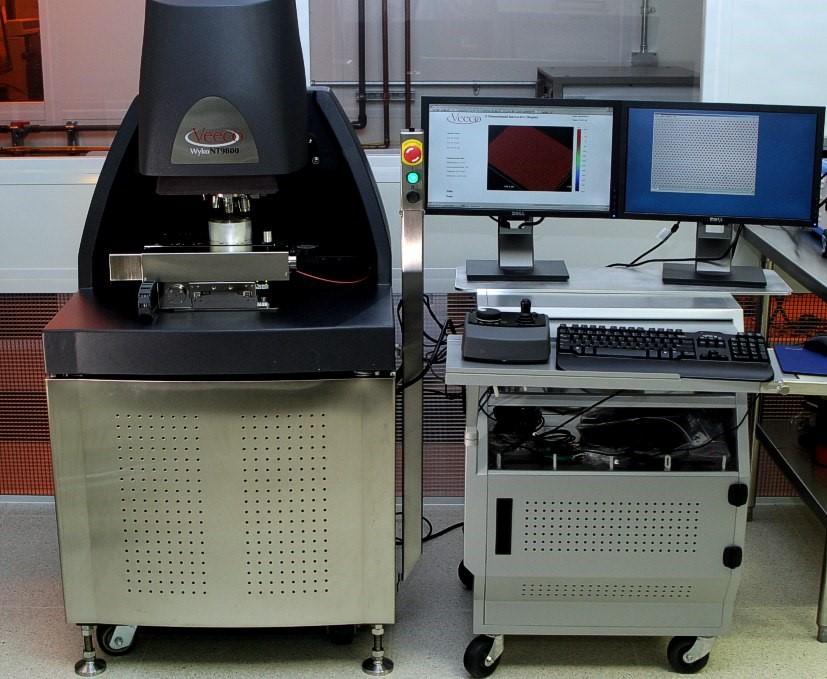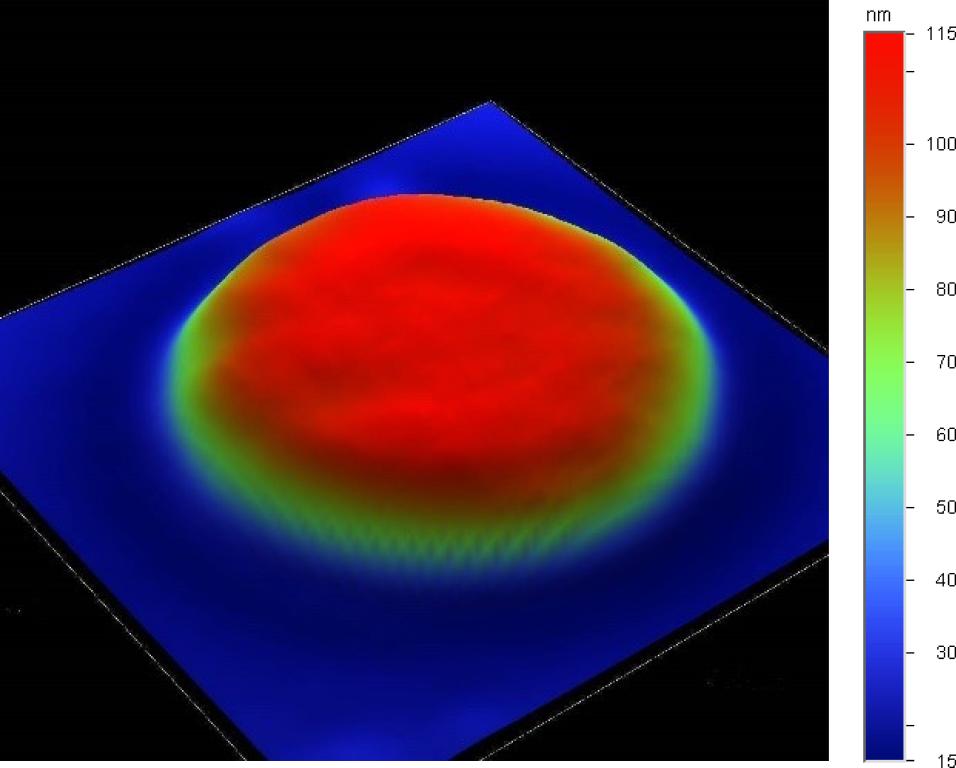
Researchers use Wyko NT9800 series optical profilometer to measure samples roughness and quantitatively analyze surface profiles as well as their changes over time or in response to external stimuli.
Technical Overview
Wyko NT9800 series optical profilometer provides rapid, non-contact metrology of roughness and 3D mapping of various samples with sub-nanometer out-of-plane resolution. Phase shift interferometry (PSI) and vertical shift interferometry (VSI) are two complimentary modes of the optical profilometer operation that provide either ultimate precision or extended Z-range. The tool employs coherence scanning interferometry combined with stroboscopic illumination and advanced image analysis to characterize periodic surface motions and dynamics of deformations. The tool is compatible with piezoelectric, electrostatic and other modes of sample actuation in liquids, air, controlled gas-phase environments as well as in vacuum.

Applications
Applications of the Wyko optical profilometer include characterization of advanced materials for photovoltaics and energy storage and metrology of large area, ultra-smooth surfaces often required for neutron reflectivity measurements and other experiments. The tool has been successfully used to study deformations of ultrathin membranes, cantilevers and suspended 2D materials.
Specifications
- Out-of-plane resolution: 0.2 nm in the phase shift interferometry mode (PSI); 2nm in the vertical scanning interferometry (VSI)
- Lateral resolution: 600 nm with a 50 X interferometric objective
- Maximum surface slope: 40 degrees
- Surface mapping of areas as large as 6” diameter wafer is possible with field of view stitching
- Maximum Z-range in the VSI mode: 2 mm
- Temporal resolution in analyzing aperiodic surface dynamics: 2-3 s
- Maximum frequency of actuation and analysis in the stroboscopic mode: 2 MHz
Recent Highlights
Graphene Flexes Its Muscle
Scaling Up Single-Crystal Graphene


